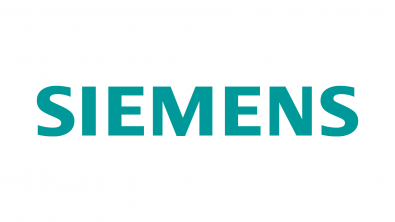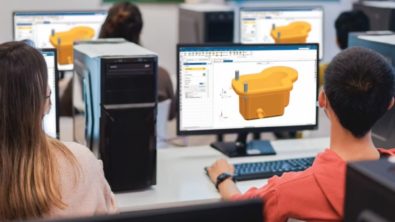Why the best online courses feel like a community, not a classroom

Online learning has become a cornerstone of modern education, offering flexibility and accessibility to students worldwide. Yet, despite its many advantages, online learning often struggles to keep students engaged. Research done by the U.S. Department of Education indicates that students without a sense of connection or community can feel isolated, leading to high dropout rates and diminished outcomes.
But what if we approached online education differently? What if we embraced the idea that learning, like life, takes a village? Siemens USA CEO Barbara Humpton dives into this question in a recent episode of the Engineering the Future Workforce podcast.
Listen on Spotify
Listen on Apple
The power of community and mentorship
Creating a sense of community in online learning doesn’t just improve engagement; it prepares students for the collaborative demands of the modern workforce. Cohort-based learning enables students to share ideas, tackle challenges together and learn from diverse perspectives. Mentors play an equally vital role by offering guidance, real-world insights and encouragement.
Humpton sees tremendous potential in combining technology with human connection to create transformative learning experiences. “The ability to engage with coaches and mentors, to work in cohorts where learners motivate and support each other, makes all the difference,” she shared.
Humpton discussed Siemens’ mentoring pods, a program that brings together small groups of employees with shared interests in specific topics. “The mentor guides the learning, but much of the magic happens within the group itself. They’re learning from one another, challenging each other and growing together,” she explained.
The human element in online learning
The appeal of online learning lies in its flexibility, allowing people to study on their own schedules. This makes it valuable for a wide range of individuals, including parents, caregivers, people without access to reliable transportation and anyone balancing education with other responsibilities.
However, convenience can come at a cost. Traditional classrooms offer face-to-face interactions, a shared learning environment and mentors who can provide immediate guidance. Without these elements, many online learners struggle to stay engaged.
Humpton highlighted how blending technology with personal interaction can bridge this gap. “I’m a firm believer that universities can build out flexible offerings while maintaining the human touch,” she said. Programs that include cohort-based learning, where students progress together, and mentorship opportunities can replicate the sense of community found in traditional settings.
One successful example comes from the Applied Sustainability for Technical Managers Specialization series of courses on Coursera, which Siemens created with the University of Colorado-Boulder. These courses combine self-paced learning with access to the instructor, Dr. Michael J. Readey, and peer discussions with cohorts.
This design promotes a sense of connection and shared purpose, helping learners stay engaged and inspired throughout their journey. When learners finish the course, they gain a shareable “Design for the Circular Economy” credential to validate their expertise in sustainable design. Interested learners can register for this free course today.
Addressing talent shortages through accessible learning
The challenges facing online education are closely tied to a broader issue: the skills gap and labor shortages in many industries, including engineering and technology. As Humpton noted, “We just don’t have all the people we need to do the jobs that need to be done.” To address this, academia and industry must work together to make education more accessible and relevant.
By connecting students with working professionals, online programs can provide a bridge between education and the workforce. Professionals bring invaluable real-world experience and inspire students by showing them what’s possible in their chosen fields. Additionally, exposing learners to mentors and industry networks prepares them to transition seamlessly into their careers.
Building the village for lifelong learning
Lifelong learning thrives when supported by a community — whether through mentors, peers or professional networks — creating spaces where individuals can grow together. This collective approach not only opens doors to personal development and adaptability, but fosters a sense of shared purpose. For employers, investing in collaborative learning environments builds resilient, innovative teams prepared for the future. For individuals, it’s a chance to grow, connect, and find purpose in their careers and beyond.
Humpton’s advice sums it up beautifully: “Stay curious, take initiative and commit to lifelong learning, and the world becomes your oyster.”
Don’t miss the rest of the conversation. Listen to the full podcast episode to learn how to cultivate lifelong learning for future-ready engineers.
Meanwhile, if you’re looking to expand your skillset or upskill, register now for one of our free courses on Coursera and start earning credentials.


